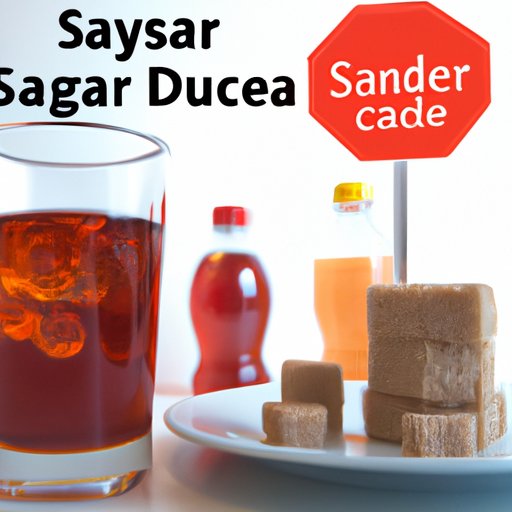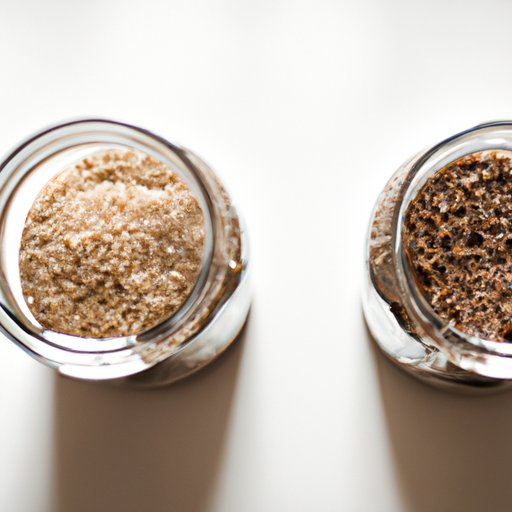Introduction
Pre-diabetes is a condition in which blood sugar levels are higher than normal, but not yet high enough to be considered type 2 diabetes. According to the Centers for Disease Control and Prevention (CDC), about one-third of adults in the United States have pre-diabetes. The good news is that with lifestyle modifications, such as following a pre-diabetic diet, it’s possible to prevent or delay the onset of type 2 diabetes.

Eating a Low Glycemic Diet
A low glycemic diet is one of the most effective ways to control your blood sugar levels if you’re pre-diabetic. Low glycemic foods are those that are broken down slowly by the body, resulting in a slow and gradual release of sugar into the bloodstream. This helps keep blood sugar levels stable, which is important for people with pre-diabetes.
What is a Low Glycemic Diet?
Low glycemic foods are typically high in fiber and protein and low in sugar. Examples include oatmeal, quinoa, sweet potatoes, legumes, vegetables, nuts, and seeds. Eating a variety of these foods can help you maintain a balanced diet, while also controlling your blood sugar levels.
Benefits of Eating a Low Glycemic Diet
In addition to helping control blood sugar levels, a low glycemic diet has many other benefits. It can help reduce your risk of heart disease and stroke, lower cholesterol levels, and boost energy. It can also help you maintain a healthy weight, which is important for managing pre-diabetes.
Incorporating Healthy Fats and Proteins
Healthy fats and proteins should also be included in a pre-diabetic diet. These foods provide essential nutrients and help keep you feeling full. They also help slow the absorption of carbohydrates, which can help keep your blood sugar levels stable.
Sources of Healthy Fats and Proteins
Healthy sources of fats and proteins include fatty fish (such as salmon, tuna, sardines, and mackerel), eggs, nuts, seeds, nut butters, avocados, and olive oil. These foods are all excellent sources of essential nutrients and can help you feel full and satisfied.
Advantages of Eating Healthy Fats and Proteins
Eating healthy fats and proteins can help reduce inflammation, regulate hormones, and improve overall health. They can also help reduce hunger cravings and stabilize blood sugar levels. This can be especially beneficial for people with pre-diabetes.

Avoiding Sugary Drinks and Processed Foods
Sugary drinks and processed foods should be avoided when following a pre-diabetic diet. These foods are often high in sugar, calories, and unhealthy fats, which can lead to weight gain and an increase in blood sugar levels.
How to Identify Unhealthy Sugary Drinks and Processed Foods
Sugary drinks include sodas, energy drinks, and fruit juices. Processed foods include chips, crackers, frozen dinners, and store-bought baked goods. While some of these foods may be labeled “low-fat” or “sugar-free,” they are still highly processed and should be avoided.
Health Risks of Consuming Too Much Sugar and Processed Foods
Consuming too much sugar and processed foods can lead to weight gain and an increase in blood sugar levels. This can increase your risk of developing type 2 diabetes, as well as other health problems such as heart disease and stroke.
Adding Fiber-Rich Foods to Your Plate
Fiber-rich foods are an important part of a pre-diabetic diet. Fiber helps slow the absorption of carbohydrates, which can help keep blood sugar levels stable.
What Are Fiber-Rich Foods?
Fiber-rich foods include fruits, vegetables, beans, nuts, and whole grains. Eating a variety of these foods can help you get the recommended amount of dietary fiber each day, which is 25 grams for women and 38 grams for men.
Benefits of Eating Fiber-Rich Foods
In addition to helping regulate blood sugar levels, eating fiber-rich foods can help reduce cholesterol levels, promote weight loss, and improve digestive health. They can also help you feel full and satisfied, which can help you manage your pre-diabetic diet.
Eating Mostly Plant-Based Foods
Eating mostly plant-based foods is another way to manage pre-diabetes. Plant-based foods are naturally low in calories and fat, and they contain important vitamins, minerals, and fiber. Eating mostly plant-based foods can also help reduce your risk of developing type 2 diabetes.
Different Types of Plant-Based Foods
Examples of plant-based foods include fruits, vegetables, beans, lentils, nuts, and seeds. Eating a variety of these foods can help you get the nutrients you need and keep your blood sugar levels stable.
Benefits of Eating Mostly Plant-Based Foods
Eating mostly plant-based foods can help reduce cholesterol levels, promote weight loss, and improve overall health. It can also help reduce inflammation and protect against certain chronic diseases, such as type 2 diabetes.

Choosing Whole Grains Over Refined Grains
Whole grains are another important part of a pre-diabetic diet. Whole grains are unprocessed grains that contain all parts of the grain kernel, including the bran, germ, and endosperm. They are rich in fiber, vitamins, minerals, and other important nutrients.
Differences Between Whole Grains and Refined Grains
Refined grains are grains that have been stripped of their bran and germ. Examples include white flour, white rice, and white bread. These foods have been stripped of their nutritional value and can cause spikes in blood sugar levels. On the other hand, whole grains are packed with nutrients and can help keep your blood sugar levels stable.
Health Benefits of Eating Whole Grains
Eating whole grains can help reduce cholesterol levels, promote weight loss, and improve overall health. They can also help reduce the risk of developing type 2 diabetes and other chronic diseases. For people with pre-diabetes, incorporating whole grains into their diet can be especially beneficial.
Limiting Added Sugar Intake
Limiting added sugar intake is also important for people with pre-diabetes. Added sugars are sugars that are added to foods during processing or preparation. They are found in many processed foods, including candy, cookies, cakes, and soda.
How to Limit Added Sugar Intake
Limiting added sugar intake is key for managing pre-diabetes. Reading food labels can help you identify foods that contain added sugars. Eating mostly whole, unprocessed foods is also a good way to limit added sugar intake.
Health Risks of Too Much Added Sugar
Consuming too much added sugar can lead to weight gain and an increase in blood sugar levels. It can also increase your risk of developing type 2 diabetes, as well as other chronic diseases such as heart disease and stroke.
Conclusion
Following a pre-diabetic diet is an important part of managing pre-diabetes. Eating a low glycemic diet, incorporating healthy fats and proteins, avoiding sugary drinks and processed foods, adding fiber-rich foods, eating mostly plant-based foods, choosing whole grains over refined grains, and limiting added sugar intake can all help you manage your pre-diabetic condition.
Summary of Pre-Diabetic Diet Recommendations
In summary, if you are pre-diabetic, it’s important to follow a healthy diet. This includes eating a low glycemic diet, incorporating healthy fats and proteins, avoiding sugary drinks and processed foods, adding fiber-rich foods, eating mostly plant-based foods, choosing whole grains over refined grains, and limiting added sugar intake.
Final Thoughts on Pre-Diabetic Diet
Managing pre-diabetes with diet and lifestyle modifications can help prevent or delay the onset of type 2 diabetes. Eating a healthy, balanced diet that is low in sugar and processed foods can help you maintain your blood sugar levels and reduce your risk of developing chronic diseases.
(Note: Is this article not meeting your expectations? Do you have knowledge or insights to share? Unlock new opportunities and expand your reach by joining our authors team. Click Registration to join us and share your expertise with our readers.)
